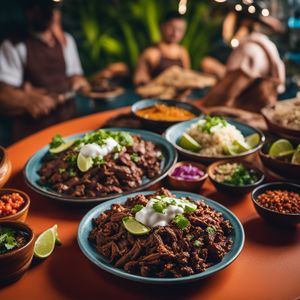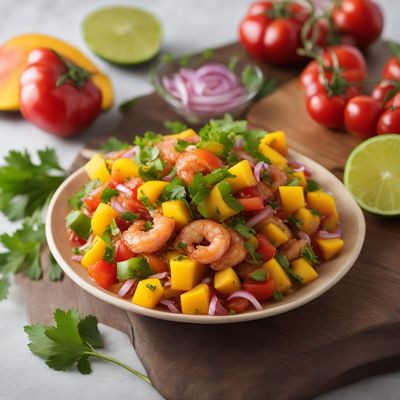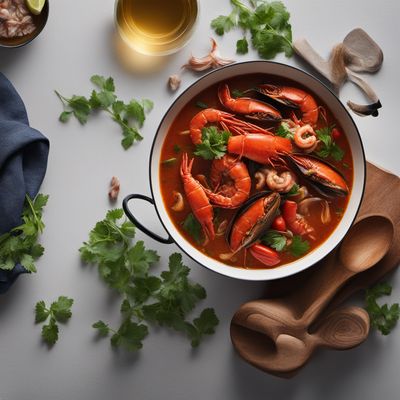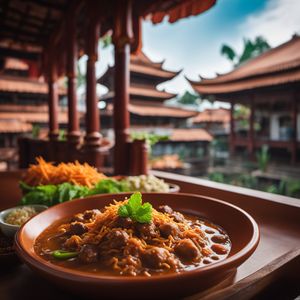
Dish
Binagoongan
Binagoongan is made by sautéing pork in garlic and onions until it is browned. Shrimp paste is then added to the mixture and cooked until it is fragrant. Tomatoes and chili peppers are added to the mixture and cooked until they are soft. The dish is then simmered until the pork is tender and the sauce has thickened. Binagoongan is typically served with steamed rice and a side of vegetables.
Origins and history
Binagoongan is a traditional Filipino dish that has been around for centuries. It is believed to have originated in the northern region of the Philippines, where shrimp paste is a common ingredient in many dishes. The dish has since spread throughout the country and is now a popular dish in many Filipino households.
Dietary considerations
Binagoongan is high in protein and fat, and should be consumed in moderation by those with high blood pressure or cholesterol. It is not suitable for vegetarians or vegans due to the use of pork and shrimp paste.
Variations
There are many variations of Binagoongan, including Binagoongang Baboy (pork), Binagoongang Manok (chicken), and Binagoongang Talong (eggplant). Some recipes also call for the addition of coconut milk to the sauce for a creamier texture.
Presentation and garnishing
Binagoongan is typically served in a large bowl with the pork and sauce in the center and the vegetables arranged around the edges. It is garnished with sliced chili peppers and chopped cilantro.
Tips & Tricks
To make the dish less salty, rinse the shrimp paste before adding it to the mixture. You can also add a tablespoon of sugar to balance out the flavors.
Side-dishes
Binagoongan is typically served with steamed rice and a side of vegetables, such as sautéed bok choy or steamed okra. It can also be served with a side of sliced tomatoes and onions.
Drink pairings
Binagoongan pairs well with a cold glass of beer or a sweet and tangy calamansi juice.
Delicious Binagoongan recipes
More dishes from this category... Browse all »

Agemono
Japanese cuisine

Ahima’a
Pacific Northwest cuisine

Al dente
Italian cuisine

Alla creta
Italian cuisine

Asador criollo
Argentinian cuisine

Baoshao
Chinese cuisine

Barbacoa
Mexican cuisine

Barbecue
American cuisine


